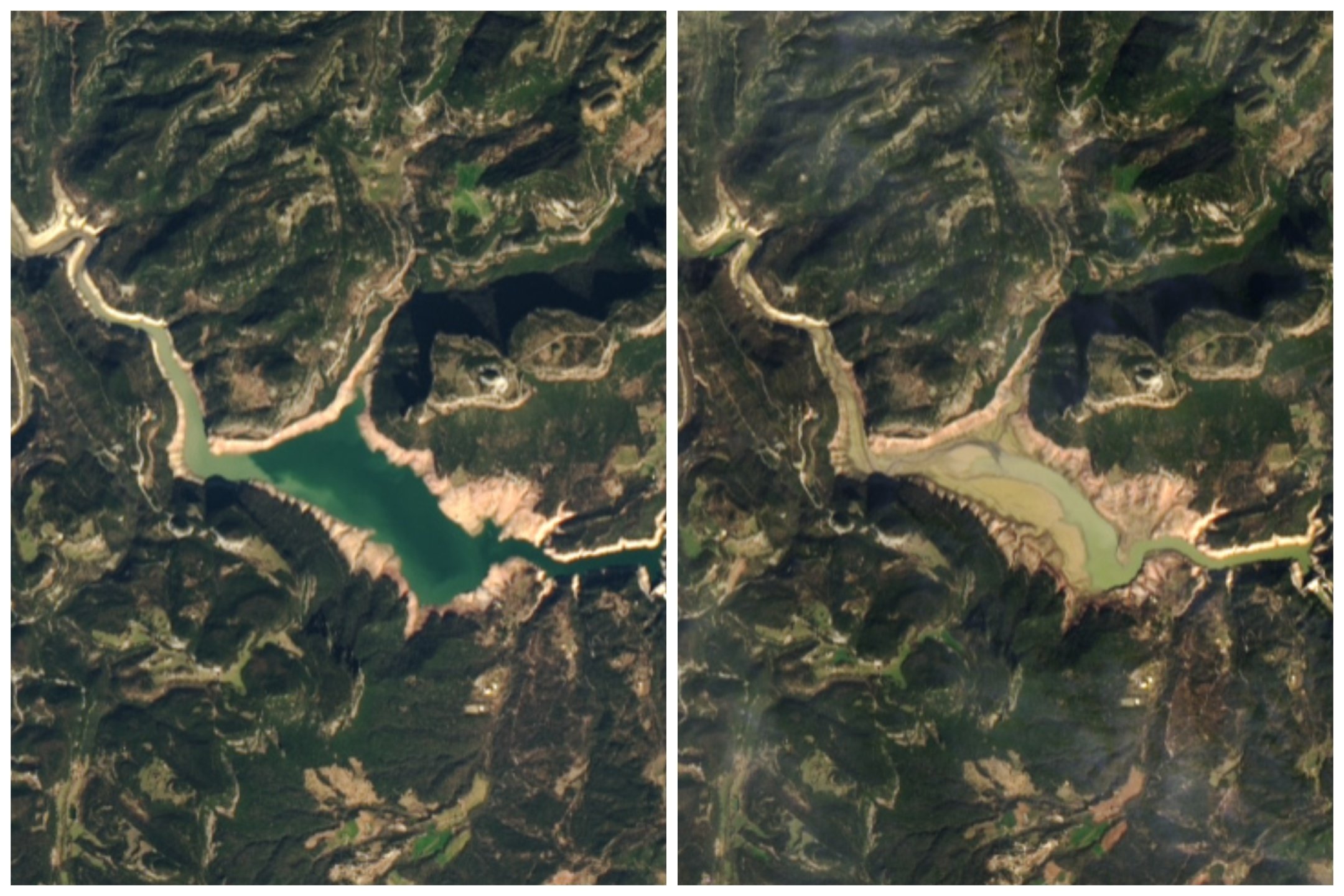THE re-emergence of an 11th century church from a reservoir that feeds Barcelona was seen as a barometer of the devastating drought parching the region.
Situated 80 kilometres inland from the Catalan capital, the Sau Reservoir’s receding waters have revealed the remnants of the old village of Santa Roma de Sau, now completely above the water line.
The skeletal outline of the buildings and the bell tower of the village church, submerged since the 1960s when the Sau dam was built, have been captured in haunting images shared widely on social media.
And shocking recent satellite photos taken just a year apart clearly show that Catalunya’s second largest reservoir has all but dried up.

Historically, the reservoir has been around 65% capacity in the springtime, but by March 2023 it’s levels had already dipped to 7%.
Just a year later, the Sau stands at 1% capacity as of last week.
However, a front of storms and heavy rains that swept across the peninsula from last week may have changed the picture slightly.
The latest figures show that, between Thursday and today, the reservoir’s levels have increased from two million litres of water to nearly four and a half.
Measurements across Catalonia’s internal basins showed rainfall ranging from 30 to 60 l/m², with some areas even experiencing higher levels.

Before this spell of wet weather, the combined reservoir levels in Catalonia’s internal basins stood at a mere 14.41%.
Post-rainfall, this figure has inched up to 14.69%, with expectations for a slight further increase.
The snowfall across the Pyrenees, depositing 30 to 50cm of fresh snow – with some areas recording up to 70cm – promises to contribute further to the reservoirs as it melts, feeding into the basins.
The good news comes as the Meteorological Service of Catalonia declared the previous two years the driest on record in 110 years, with 2022 holding the grim title of the driest.

In response to the crisis, the Catalan government imposed a drought emergency on February 1, 2024, setting strict limits on water usage for the region’s 6 million inhabitants and the agricultural sector.
These restrictions, a direct consequence of the reservoirs’ levels plunging below the critical 16% threshold, have led to the shutdown of public amenities like fountains and beach showers in Barcelona and a daily water allowance of about 210 litres – equivalent to a 12 minute shower – per person.
The autonomous region’s farmers, who consume one third of the water, have been first in line to cut back.
The government wants them to use 80% less water for irrigation and 50% less water on livestock. Meanwhile, Catalunya’s businesses have been told to cut water use by a quarter.
The local government has already invested half a billion euros in desalination plants, and proposals are on the table to ship water from the rainy north of Spain to its dry eastern regions.
So far, Catalunya’s booming tourism industry has been saved from stricter measures, despite tourists using double the amount of water daily than a resident.
It’s a sector that makes up 12% of the region’s economy, with 10 million visitors arriving in 2022 – mostly during the hottest months of the year.
Accordingly, the critical reservoir levels in the region – symbolised by Sau Reservoir’s dire condition – has prompted concerns over water security, with potential plans to import water from Valencia in place if the situation doesn’t improve.
READ MORE:
- Drought latest in Spain: Has this weekend’s rain helped relieve the pressure on Malaga’s reservoirs?
- Church in Spain that was submerged in the 1950s emerges from a dried up reservoir in Catalunya amid severe…
- More water restrictions to come after February rains barely refilled the Costa del Sol’s Conception reservoir








